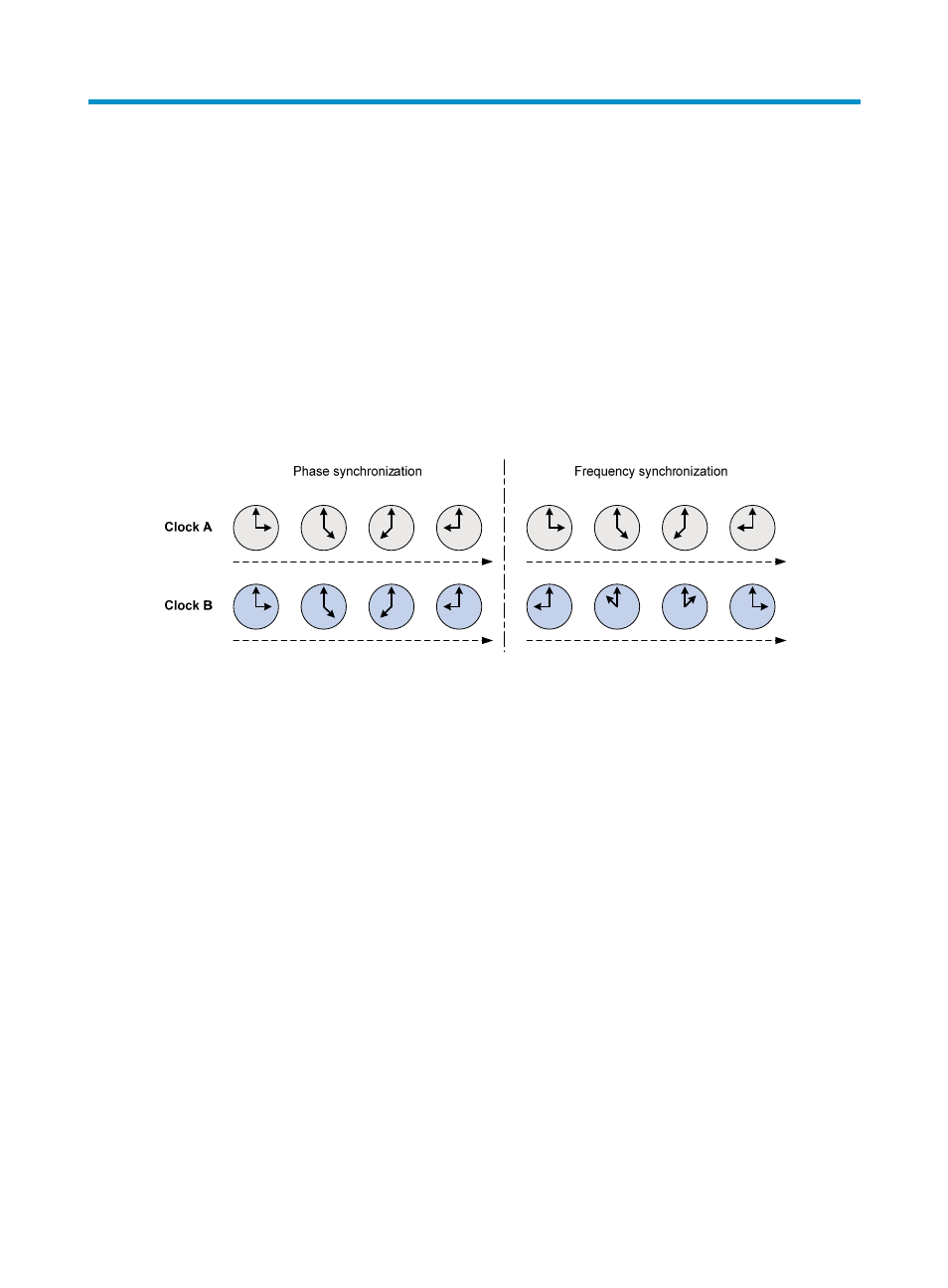Configuring ptp, Overview, Basic concepts – H3C Technologies H3C S6300 Series Switches User Manual
Page 65: Ptp profile

52
Configuring PTP
Overview
Network clock synchronization keeps the offset of time and frequency within a rational range among all
the devices in a network. It involves two concepts:
•
Phase synchronization (time synchronization)—Keeps frequency and phase consistency of signals.
•
Frequency synchronization (clock synchronization)—Keeps a specific relationship between signals
in terms of frequency or phase. The signals appear at an even rate so that all devices in the network
operate at the same rate. The phase offset among the signals keeps a specific value.
Figure 18 Phase synchronization and frequency synchronization
In
:
•
The time on Clock A and Clock B is consistent in terms of phase synchronization.
•
The time on Clock A and Clock B keeps a specific offset (6 hours, in this example) in terms of
frequency synchronization.
Precision Time Protocol (PTP) synchronizes the time among devices. It can also implement frequency
synchronization. Compared with the sub-second accuracy of NTP, PTP synchronizes time with
sub-microsecond accuracy. For more information about NTP, see "
Basic concepts
PTP profile
A PTP profile defines two PTP standards: IEEE 1588 Version 2 and IEEE 802.1AS.
•
IEEE 1588 Version 2—1588v2 defines high-accuracy clock synchronization mechanisms. It can be
customized, enhanced, or tailored as needed. 1588v2 is the latest version.
•
IEEE 802.1AS—802.1AS is introduced based on IEEE 1588. It specifies a profile for use of IEEE
1588-2008 for time synchronization over a virtual bridged local area network (as defined by IEEE
802.1Q). The BMC algorithm in 802.1AS is a little different from IEEE 1588. 802.1AS supports only
the peer delay mode, and supports only point-to-point full-duplex Ethernet, IEEE 802.11, and IEEE
802.3 EPON links.
